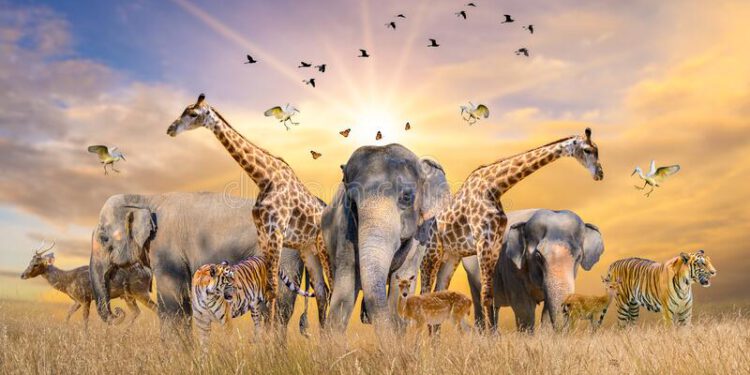The human mind is only one of the many minds that nature has produced by the process of evolution. And even if we are particularly attracted to it because it’s the one that we have, there’s nothing objective that suggests that it’s the only one or even the highest one. You really see that diversity at the level of dreams.
If you are a pet owner, it may seem obvious to you that your furry friends dream. We’ve all seen our dogs yipping in their sleep, or are cats meowing during a nap. But this is an academic podcast, and actually proving that animals dream isn’t so simple.
Because, historically, the way that we know that other people dream has been because we ask them and they answer. “Oh, last night I had a really bizarre dream. Let me tell you about it.” And so, with animals, given the absence of that shared common linguistic schema, how do we get to the conclusion that, in fact, other animals also dream and maybe dream in ways that might be similar to the way we dream?
The scientific community has been so agnostic on this that until 2020, almost no study of sleeping animals in the whole literature use the word dream.
I told myself, “There’s no way that there are literally thousands and thousands of publications on the sleep of so many different species, and yet virtually none of them in the 20th century mention the word dream, dreams, or dreaming.” So you don’t find the verb, you don’t find the noun, you don’t find the gerund.
Amazing.
As I began digging deeper and deeper into the science, I began to realize that this absence was actually quite systematic to the point that it seemed like it almost might be symptomatic. It might be symptomatic of an attempt to avoid an issue. In many ways, the book is me trying to situate myself at the heart of that absence and asking, “Why is it missing?” and making the argument that that absence needs to be filled out.
There are two arguments Peña-Guzmán makes. The first is scientific, that all these studies really do prove that animals dream. The second comes from his work as a philosopher, that animal dreams raise profound questions about our ethical relationship to these creatures.
A lot of people think that dogs and cats and hamsters, they can definitely feel emotions for which there is a very clear evolutionary function. Like fear, it helps you escape from predators. But then there are other more complicated emotions that sometimes we’re not sure if animals really have them, and the book sheds light on some of those emotions.
From the University of Chicago Podcast Network, this is Big Brains, a podcast about the pioneering research and the pivotal breakthroughs that are reshaping our world. On this episode, do animals dream, and if so, what that says about their consciousness? I’m your host,
Do animals dream? Well, it’s a simple question with massive implications. poured through thousands of animal sleeping studies from decades of research, and what he found surprised him. Although, none of them used the word dream, he saw evidence of dreams all over the place.
We do have enough evidence to believe that other species have these nightly experiences of a fantastical, almost phantasmagoric world.
Paul Rand: And he divides that evidence into three different buckets. The first is electrophysiological evidence.
Yes, electrophysiological evidence just refers to what we’ve learned about the animal brain in the state of sleep by looking at brain activity. So here we’re talking primarily about EEG studies.
Basically, measuring the electrical activity of brains and creating correlations between different states to figure out what that activity signifies.
If you compare what the brains of many animals are doing when they are asleep and when they are awake, so if you just hold them side by side and try to juxtapose them, you realize that there is a significant difference.
However, in the middle of the sleep cycle, typically there is a moment when the electrical activity, the patterns of neuronal activation that we see coming out of the animal brain begin to resemble those of the waking state. They don’t just begin to resemble them, in fact, they match them. They match them one to one to the point where we can start making some pretty impressive inferences.
Is that the same thing in humans, by the way? Does that occur just like that in humans?
That’s correct. We look at what the brain of human sleepers are doing. By now, we have enough data to try to map or match certain sleep experiences with waking ones.
For instance, a study of zebra finches from 2000 showed that the same electrical activity that happens when they sing their bird song while awake on occasion will also happen when they sleep. The same exact parts of the brain light up in the same exact order. argues that this means we can safely infer that they’re dreaming about singing.
Interestingly, the researchers in this study all said this was only evidence of an algorithmic implementation.
As a general rule, scientist never use a high level psychological concept, let’s say like belief or memory or imagination, to explain the behavior of non-human animals if you can explain the behavior just as well, only appealing to lower processes that have a deeper evolutionary history.
The rule is called Morgan’s canon, and many scientists adhere to it. As Peña-Guzmán writes in the book, researchers believe that birds don’t experience the song anymore than my laptop experiences running Adobe Reader. Of course, Peña-Guzmán disagrees, and he points to the fact that the zebra finches’ throats moved exactly as though they were singing during these events. So could the electrical activity and the embodiment combined confirm that they’re actually experiencing a dream? Other electrophysiological studies provide further evidence. For instance, we can also learn about animal dreams by looking at the way electrical activity cycles during sleep.
We know that in humans and a lot of other mammals, the two phases are what are known as non-REM sleep, or deep sleep, which is when you first fall asleep and you go into that very deep, restorative sleep. And then the second phase of the sleep cycle is what is known as REM sleep, rapid eye movement sleep. And that’s when you see that spike in neuronal activation that starts giving you those parallels across the waking/sleeping divide.
One of the most important studies on this had to do with another kind of zebra, this time, zebra fish.
The zebra fish study that I looked at is a publication that shows two things. On the one hand, it shows that fish, like zebra fish, they have the same biphasic sleep cycle that we find in mammals. At some point, when they’re asleep, it’s almost as if there is a neuronal revolution that erupts in the brain, and you start seeing the brain lighting up like a Christmas tree and lighting up in patterns that are comparable to the way in which the brain lights up in you and I.
Paul Rand: That’s remarkable.
And so, it really extends the possibility of dreaming to species as different from us as a tiny, tiny little fish.
Paul Rand: The second set of evidence Peña-Guzmán points to has to do with the behavior of animals while they sleep.
I look at research from the 1990s conducted by the primatologist, Kimberly [Mukabee 00:09:04], who decided to look at what chimpanzees do when they fall asleep. And so, she conducted an experiment at the University of Washington in which she mounted a bunch of cameras inside the sleeping quarters of a group of chimpanzees, just to see what they do. Many of these chimpanzees began signing in their sleep using American Sign Language.
Now, these chimpanzees had already been taught ASL as part of their upbringing. And so, they were used to communicating with human researchers but also with one another for a long time using ASL. And so, for them, ASL was a mode of communication. And so, the fact that you suddenly see the emergence of signing behavior when the chimpanzees are passed out and asleep becomes indicative that they are having a dream experience in which they are signing.
Paul Rand: And these weren’t just easy-to-interpret hand twitches. As written in the book, “These were elaborate signs that the probability of this happening by pure chance is astronomically small.”
So sometimes she talks about one chimpanzee signing asking for coffee. That particular example stood out to me because I thought to myself, “How would a chimpanzee even know what coffee is? That doesn’t even make sense.” And so, I sent an email to Professor Mukabee who responded to me saying, “Well, we actually used to give them coffee. And over time, they learned what coffee was and they learned to ask for it.”
Paul Rand: Man. Okay.
And so, I think some of these chimpanzees were dreaming of having coffee. In itself, that already raises a lot of questions about the cognitive capacities of these animals, but it also raises an interesting point about the nature of dreaming more generally. Animals like chimpanzees, they don’t just dream of scenarios that are evolutionarily significant, like how do I kill a prey, or how do I escape from a predator? But rather, they dream of things that they pick up in the course of experience. So their dreams are, I would say, social and cultural. They have to do with the specific experience that this particular animal has had. Because, of course, you’re never going to find a chimpanzee who dreams of coffee and who signs for it using ASL in the wild. And so, it brings the importance of individuality, of personality, of personal experience into the picture in a way that I think is highly suggestive.
The final argument for animal dreaming comes from looking at the neuro analytical studies, the actual anatomy of animal brains, and the most prominent study involves cats.
Yes, the study from the 1960s involving cats is very famous in the field of dream science because it was conducted by one of the founders of modern dream research, a French neuroscientist named Michel Jouvet.
Michelle Jouvet had this idea that there must be a reason why when we dream we don’t physically act out our dreams, right? So we are horizontal. We are immobile for the most part. So what is happening in sleep that prevents us from really physically acting out our dreams? And so, he came to the conclusion that there is a particular part of the brain that is in charge of producing that state of atonia, or lack of bodily movement, during the dream state such that even though our minds think that we are actively engaged in the world, physically we are not. He asked himself, “What would happen if I removed the part of the brain that keeps the body in a state of atonia?”
And so, he essentially did that with cats. He grabbed a group of domestic cats, and he intervened surgically into their brains and removed the part of the brain that brings about that state of atonia. What he found was nothing less than revolutionary in its time and I think today. He found that, indeed, the cats that had been surgically affected suddenly would perform the spectacle of their dreams from top to bottom. There are videos of this on YouTube for those who might be interested. If you Google Michel Jouvet cats, you can find some of the original footage of the cats in his laboratory.
Tape: This remarkable film shows a cat in the middle of a night’s sleep.
And these are cats that start literally fighting with imaginary enemies in the lab while they’re asleep, but they’re moving around, they’re walking, they’re jumping.
Now, believe it or not, the cat is still asleep. But because some of its nerve pathways have been cut, it’s acting out its dreams.
They’re attacking the air with their paws.
Tape: Its brain shows all the signs of REM sleep, but its muscle activities suggest an exciting dream life chasing flies and mice.
Or they’re also cats that start displaying fear behaviors. The ears go down. They start receding. They start showing the teeth as a mode of defense. And so, you can see the spectacle of their dreams played out for you as a motoric performance.
Tape: If our muscles weren’t paralyzed, we too would probably act out our dreams in this way. Perhaps it’s fortunate for our partners that we don’t.
















